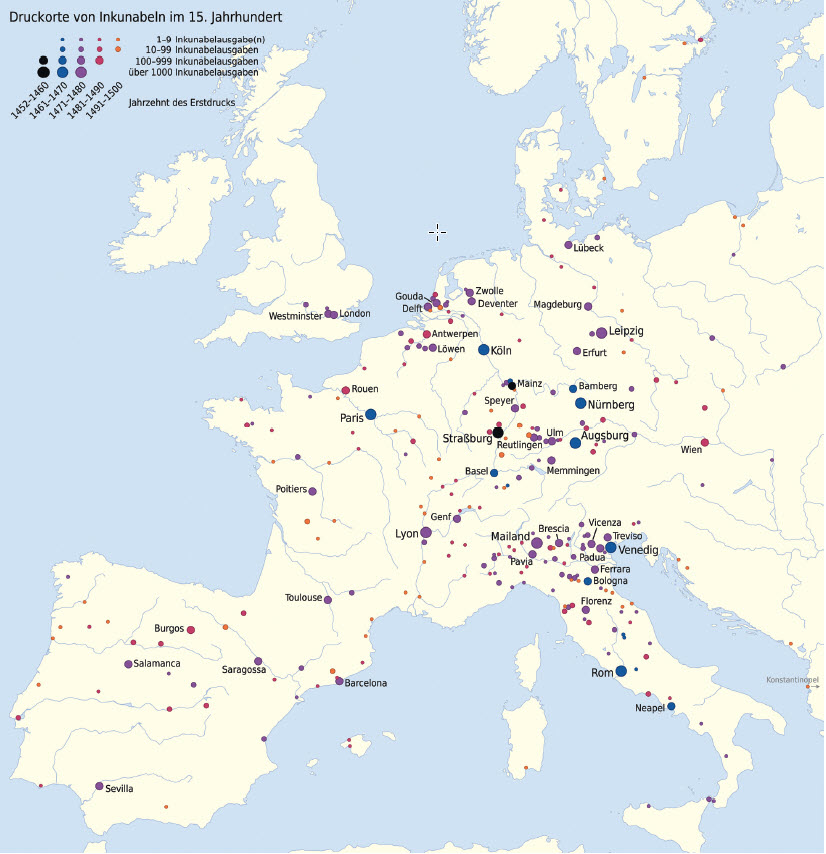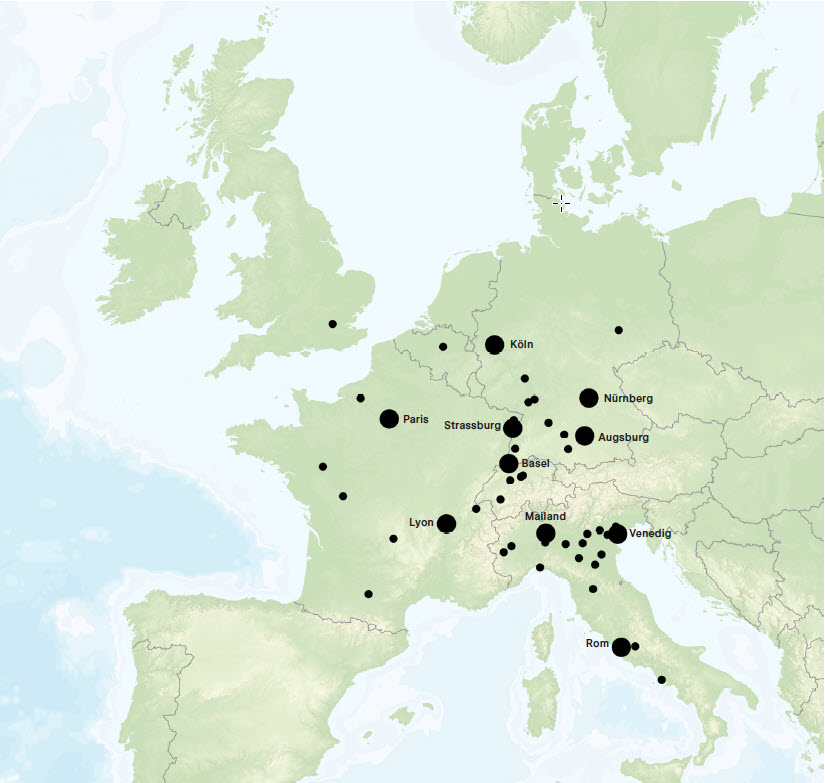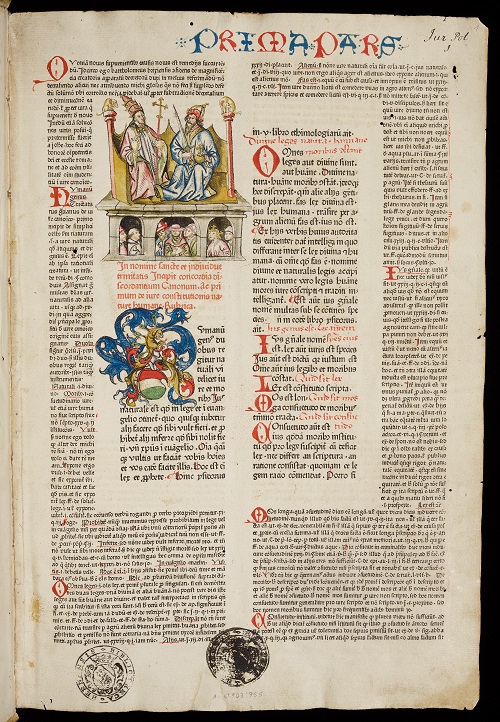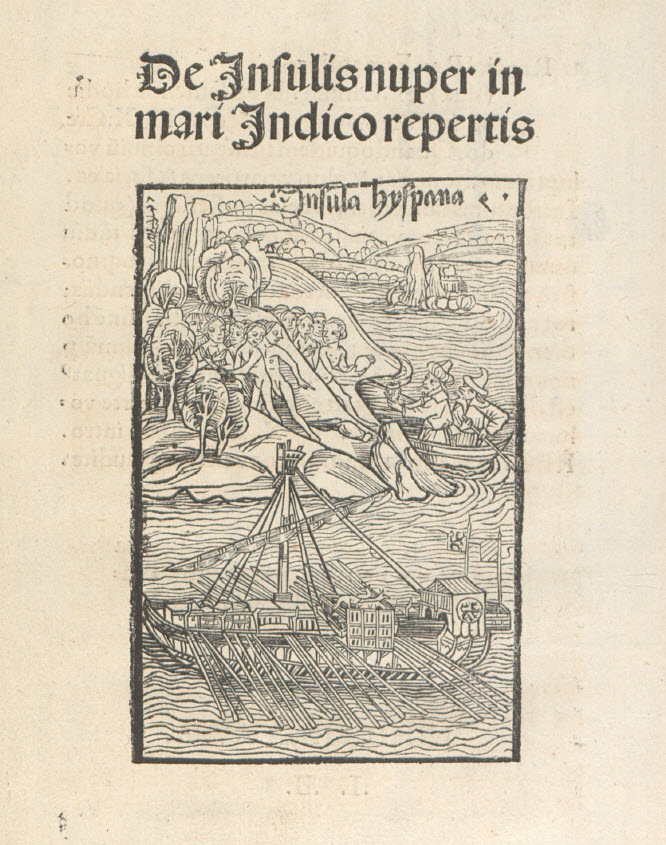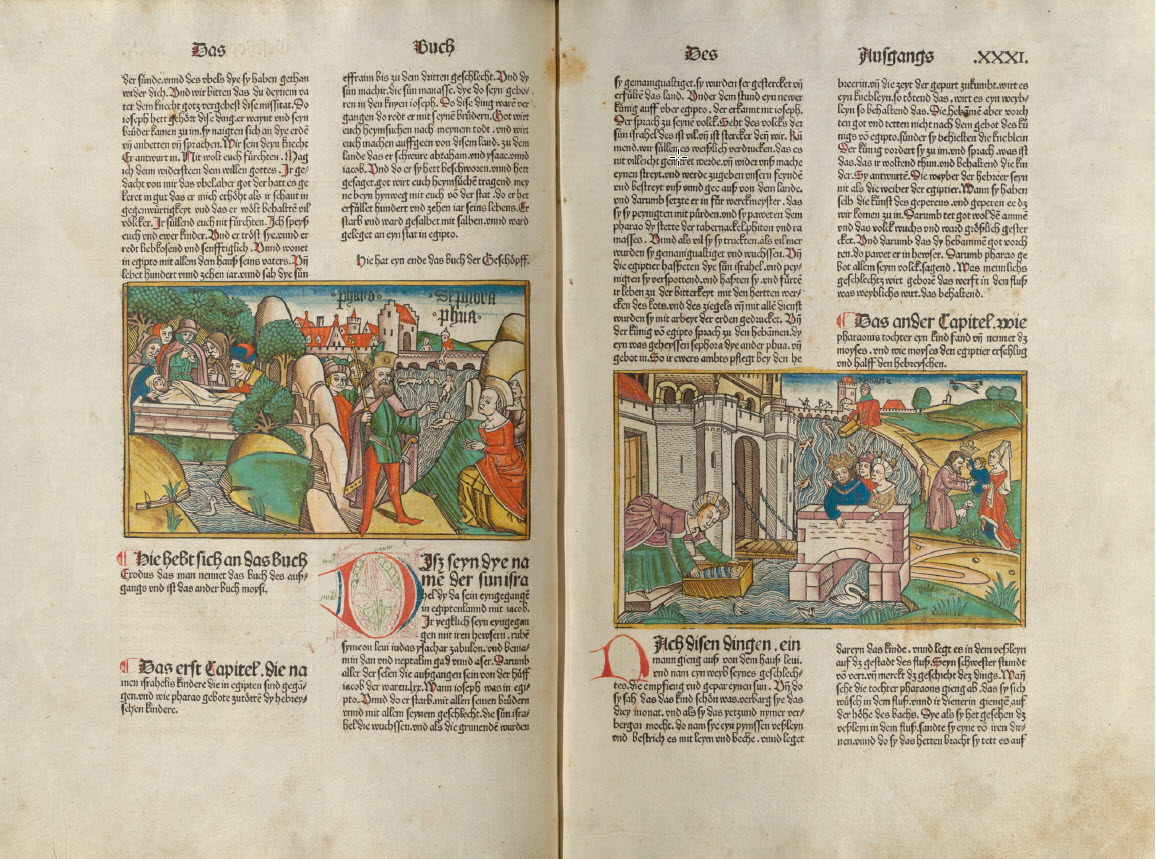Where do the Bernese incunables come from?
The printing locations
Starting in Mainz, book-printing spread rapidly throughout Europe. Today, there are 271 known printing sites up to 1500.
The Bernese incunables were printed in 47 places. All the large and important printing places are represented. Most of the prints come from Venice (108), Basel (66), Strasbourg (65), Paris (35), Nuremberg (26), Cologne (20), Lyon (19), Augsburg (14), Milan (12) and Rome (10).
Incunables from Bernese monasteries
53 of the 450 incunables can be traced back to libraries of monasteries and abbeys, which were dissolved in the course of the Bernese Reformation (1528). They formed the basis of the library for the newly founded Hohe Schule (academy) for the training of pastors.
The largest coherent collection of incunables of any religious order are the volumes from the library of the Carthusian monastery of Thorberg. It consists of 34 titles. The copy of Gratian on canon law (12th century) contains 33 with quill and ink drawn and multi-coloured ornamental initials with figurative inclusions and richly coloured ornamentations. The identity of the artist, who left his initials "J. H. V. G." in two places, is still unknown.
The Bernese town clerk Thüring Fricker (c. 1429 -1519) donated this precious volume to the Thorberg Charterhouse.
Eight volumes with 18 works, most of them on theology and law by older authors such as the friars Vincent of Beauvais and Thomas Aquinas, come from the library of the Dominican monastery. One volume, however, contains a work that was highly topical at the time: the letter of Christopher Columbus to the Spanish King Ferdinand from 1493, in which he reports on the ‘recently discovered islands in the Indian Sea'.
Incunables from private previous owners
The largest private book collection of the University Library of Bern comes from Jacques Bongars (1554 - 1612), one of the highest diplomats of the French King Henry IV. Bongars had a passion for collecting books. His library contains 3,000 printed volumes with 6,800 titles of all subjects, including 124 incunables . Thus, these make up just under a third of the incunables holdings of the UB.
Jacques Bongars cultivated a broad network with scholars and other personalities of his time. A lively exchange of books was common. Accordingly, many volumes from Bongars's library also contain numerous other names of former owners. Among others, he owned a volume by the famous French treasurer and bibliophile Thomas Mahieu (between 1515 and 1527 - after 1588), whose name is stamped on the precious binding in the Latin form Tho[mas] Maioli.
The physician Werner Zesiger from Roggwil (1902 - 1958) bequeathed his valuable book collection to the UB Bern. The 33 incunables include two of the most beautiful German Bibles before Luther. The first Augsburg printer Günther Zainer published one of them in 1475, whereas the other one was printed by Anton Koberger in Nuremberg in 1483.

